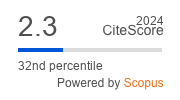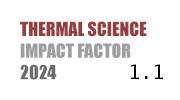THERMAL SCIENCE
International Scientific Journal
Thermal Science - Online First
Authors of this Paper
External Links
Modelling of oil flow components between the tank and active part of non-OD liquid-immersed power transformers
ABSTRACT
The paper deals with important details of a detailed thermal hydraulic network model, a prevailing approach in building transformer thermal design tools. Oil flow components in a space between the tank and the transformer's active parts are explored using FEM CFD. These flows can significantly influence the overall temperature distribution in transformers with OF-cooling and ON-cooling with highly positioned radiators. Two heat run tests on a real OFAF transformer 125 MVA, 150 / 36 kV with different cooling arrangements (coolers of rated power 250 kW and 320 kW) are used for the analysis and experimental validation. The paper considers three oil flow components between the active part and the tank: oil by-pass, oil near the tank with losses generated due to the stray flux, and oil near the outer winding with no cylinder on its outer surface. 2D axisymmetric FEM CFD simulations pointed out that frictional pressure drop in oil by-pass is equal to zero. Recommendations for modeling the three oil flow components in THNM are proposed. The influence of the insulation bulging on the oil flow and temperatures is investigated. The bulging was evaluated based on the heat run test result with the 250 kW cooler. After such calibration, temperatures were calculated for the case of 320 kW cooler, and the THNM results were compared with the heat run test.
KEYWORDS
finite element analysis, Detailed thermal-hydraulic network model, Power transformers, Hot-spot temperature, By-pass oil flow, Bulging
PAPER SUBMITTED: 2025-03-15
PAPER REVISED: 2025-05-03
PAPER ACCEPTED: 2025-05-19
PUBLISHED ONLINE: 2025-07-05
DOI REFERENCE: https://doi.org/10.2298/TSCI250315104P

